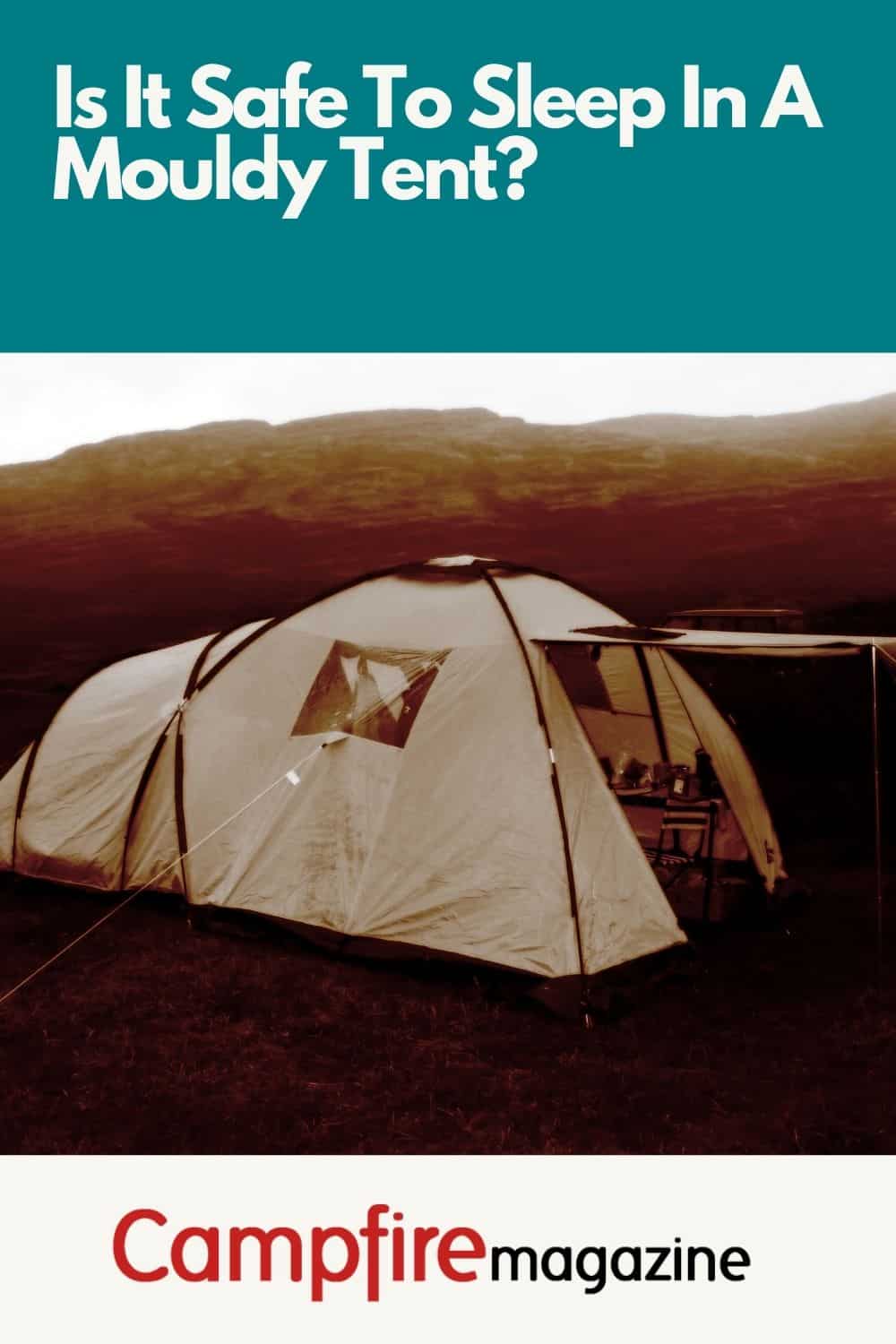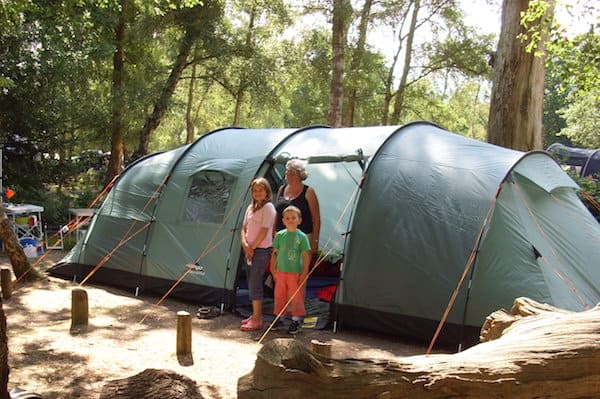In recent times, a focus on health and safety has become ingrained in our society. But this isn’t a limited subject and when it comes to camping, there’s a lot you’ll need to think about in terms of your health. One good example of this is the state of your tent; if you’ve recently taken it out of storage, you may have discovered some unsightly mould.
But mould isn’t only an eyesore, it’s also incredibly damaging to your health. While it might seem tempting to just throw the tent up and get camping regardless, this isn’t going to do you any favours.
Sleeping in a mouldy tent, or even spending time in there, can be detrimental to your immune system, your vision and your lungs. For people who have existing lung conditions, this is bad news so you’ll need to clean your tent before you use it. In the worst case scenarios, you may need to get rid of it altogether and invest in a new one.
You’ll already have a lot to do in preparation for your next camping trip so the thought of having to give the tent a good scrub could be enough to send you over the edge. But don’t worry; we’ve got your back and have some great tips for quick and easy cleaning to get your tent back to a safe standard. We’ll also be talking about the risks associated with sleeping in a mouldy tent, so let’s get to it!

Can I Sleep In A Mouldy Tent?
After a long day of outdoor activities, you’re going to want to settle down and get comfortable in your tent. But the problem with mould is that it can quickly make things unpleasant and not the comfortable experience you had hoped for.
While certain types of mould aren’t problematic, black mould is a serious concern and when it comes to camping, we wouldn’t recommend sleeping in a mouldy tent for the risk of health problems it could cause. Generally speaking, if something doesn’t feel right then it’s likely because it’s causing problems and if you’ve felt the unpleasantness of sleeping in a mouldy tent, then you’ll know exactly what we’re talking about.
If you only spend a couple of nights camping in a mouldy tent then the health effects likely won’t be anything too serious but that doesn’t mean you should risk it. You certainly should not make a habit of sleeping in a mouldy tent as this will put you at higher risk of health issues and exacerbate any existing ones.
Depending on your level of sensitivity to the mould, you may experience a number of symptoms. However, some of the most common might include the following:
Sneezing
Coughing
Other respiratory irritation
Headaches
Fatigue
Irritation in the eyes
Skin rashes
More worryingly, there are some people who have an allergy to mould and this will result in much more severe symptoms, that could include difficulty breathing, wheezing, tightness of the chest and severe coughing. So, let’s take a closer look at the respiratory problems associated with sleeping in a mouldy tent.

Sharing a love of camping
Respiratory Issues
Anyone with an underlying respiratory condition is likely to be at higher risk of developing more serious problems when exposed to black mould. Those with asthma are more likely to suffer frequent or severe attacks than they usually would.
Moreover, if you have problems with congestion on the chest, sleeping in damp conditions is only going to make things worse. Even if your condition is generally under control, just a small amount of exposure to mould and damp could cause things to get out of hand pretty quickly.
The reason for this is that mould releases spores into the environment. When these are inhaled, they may cause inflammation inside the respiratory system. As we have mentioned, this can induce an asthma attack in those suffering with the condition and bring on symptoms similar to those you’d get with flu. For most people, these symptoms will be mild and will dissipate when they remove themselves from the environment. However, for some people, it could get as serious as a hospital admission or even long term problems.
Fungal Infections
Mould is a type of fungus and it is possible for you to get a fungal infection when exposed to this. It’s important to remember that the likelihood of this is limited and only really people with existing immune system problems are at serious risk.
These fungal infections can appear in various locations around the body including the feet, scalp, skin and even in the sinuses.
Damage To Your Tent And Belongings
We’d hazard a guess that you’ve spent a considerable amount of money on your tent and so it stands to reason that you aren’t going to want to have to throw it out any time soon. But if you want your tent to last as long as possible then you’ll need to make sure it is well maintained and mould is one of the biggest problems when it comes to the deterioration of your shelter.
This is why it is super important to clean your tent so that mould and mildew will not shorten its life. We’ll give you some handy cleaning tips later in this guide.
Moreover, any items that are stored inside the tent are at risk of being affected by the mould. This applies to things like sleeping bags, blankets and your clothes, among other things and you may notice dark patches on these items.
Even more expensive and larger items like your camping mattress can be affected and this is even more likely if you’re camping in bad weather. When things get wet or damp, mould will thrive.
Have you thought about your food? You wouldn’t eat anything with visible mould on it right? Perhaps apart from that blue cheese you’ve been saving for a special occasion. But when you store food inside a mouldy tent, there’s a risk that it, too, will be infected.
What About Emergencies?
If you find yourself in a situation where you have no other choice but to sleep in your tent and it is mouldy, then you might have to brave it. Of course, we would only recommend doing this if the only other option would be sleeping on the ground outside.
For many people, the tent will be packed away and the first time they notice any mould is when they pitch the tent at the campsite. In this case, you’ll need to weigh up the situation and make the right decision for you. For example, if you’re halfway up a mountain and the weather is extremely cold, sleeping one night in a mouldy tent comes with fewer risks than sleeping outside.
However, if you’re at an organised campsite then it’s probably safer to either find a local hotel and check in there, or head home. It is disappointing but by checking your tent before you go, you won’t be faced with this issue.
How Do I Identify Mould In My Tent?
Mould is typically found in a damp or moist environment. You’ll also find mildew which has a less fluffy appearance than mould and could almost be compared to a powder. When looking at mould, you’ll notice that it is either black or green in colour and tends to form in patches. Compared to mildew, mould is much more difficult to remove.
However, you should keep in mind that if you see a dark patch on your tent, that doesn’t automatically mean that mould is to blame. There is a simple test that you can perform to determine the culprit and this involves popping a very small amount of bleach onto the affected area. Within a few minutes, it should turn lighter if mildew is the problem. However, if the patch gets darker, then it’s likely mould.
You might also be able to tell the difference between the two by its smell. Mould has a very strong and unpleasant smell that you might describe as earthy. Many people would compare it to rotting wood or damp socks.
Are There Different Types Of Mould?
It can be tempting to suddenly become concerned about all types of mould and the risks associated with them. But this will only serve to spoil your camping trip so try not to get too worked up about it. The truth is that there are some types of mould that aren’t anywhere near as bad for you.
For example, penicillin is a type of mould and yet this antibiotic treatment has been used for years to cure our health problems rather than causing them.
There are, generally speaking, two different types of mould; that which has grown in conditions with oxygen and that which has not. Anaerobic mould, grown where there is no oxygen, is the more dangerous of the two. If you’ve found mould in the crevices of your tent then there isn’t likely to have been much oxygen here while it was developing so it’s safe to say that it isn’t going to be good for you.
But for the sake of your health, we would recommend removing any type of mould and simply taking the attitude that it should not be there regardless.
So, How Did The Mould Get There?
There are several ways that mould may have gotten into your tent but for the most part, it happens because the tent wasn’t completely dry before it was put into storage. Although, there are some occasions where the storage conditions become damp over time and mould can begin to develop despite your best efforts to dry your tent after your last camping trip.
The problem is that sometimes, fungi spores can infect the tent during your camping trip but you won’t notice them as they’re microscopic. When you get to see them, it’ll be too late and they’ll have already developed into that pesky mould that we’re trying to get rid of.
Can I Remove Mould From My Tent?
If you’ve been unfortunate enough to have found mould patches on your tent, don’t get too disheartened. In many cases, it is entirely possible to clean your tent and get rid of the problem. Yes, it’s going to take a little effort and probably isn’t what you wanted when you already have a lot to prepare but it’s certainly worth it for the sake of your health.
You’ll need to find a space where you can pitch your tent while you clean it. If your back garden is large enough then this is the ideal spot, otherwise you might need to borrow some space from a friend or family member. We would also recommend using protective gear while cleaning your tent when mould is present to avoid risking your health. A face mask is the most simple yet effective type of equipment you can use here but protective goggles are also a good idea.
To start, you’ll need to take a soft brush to remove any loose mould. When you’ve done this, fill a bucket with some warm water and gentle soap and then use a sponge to clean away any visible mould. Be careful not to be too vigorous when doing this as you might interfere with your tent’s waterproof coating.
Once you’ve finished cleaning, take a dry cloth to dry the parts that you have cleaned. You’re not quite done yet; you’ll now need to take some white vinegar and water (half and half will work well) in a spray bottle and treat any affected areas with this. The vinegar is strong enough to kill any remaining spores so this is a very important step in preventing further problems.
If you can, leave your tent to dry in the sun as this will also help to kill off anything that is left over. If you need to reproof your tent, you might as well do this while you’ve got it set up in the garden and kill two birds with one stone. Moreover, since this will stop moisture from getting into the tent, you’re taking even more preventative measures against mould in the future.
When you’re finished and the tent has dried, we would recommend checking the storage bag and the area that you’ll store the tent. If you find mould here, it might be wise to treat it or choose somewhere else to keep your tent when not in use.
Removing Bad Smells
One of the biggest problems with mould is its unpleasant odour. For the most part, you’ll find that cleaning your tent will remove these but in very severe cases, the smell might linger for some time. This is the last thing you want when you’re trying to enjoy some time in nature so you might wish to use a deodoriser.
These products must be mixed with water and you’ll need a container large enough to be able to submerge the whole tent. Create the mixture and leave the tent to soak for at least ten minutes. This will kill off any stinky spores and have your tent feeling fresh and clean. Of course, just like before, you’ll need to make sure that you fully dry the tent before putting it back into storage.
While it may be tempting to put your tent into the washing machine for a quick and convenient way of removing mould, this isn’t a good idea. There is a serious risk of washing away the waterproof coating so this will only add another job to your to do list. More importantly, the harsh cleaning of the washing machine might damage the tent material or weaken the seams.
Preventing Future Problems
They say that prevention is better than cure so we would highly recommend following these top tips to avoid problems with mould in the future.
Only ever store your tent when it is completely dry.
Choose suitable storage to ensure that damp cannot get to the tent. A waterproof container is an excellent option.
Rather than storing the tent in a garage or outbuilding, try to make space within the house as there is less chance of the conditions being damp.
When not in use, get into the habit of airing your tent at least every four to six weeks.
If there is any organic material in your tent such as grass, leaves or soil, be sure to remove this prior to storing as there may be mould spores within it.
Mould thrives in dark conditions so try to store the tent somewhere with as much light as possible.
There are tents that feature mould prevention, so when buying a tent, keep an eye out for this.
In some cases, you have to admit defeat and accept that your tent cannot be salvaged. If the tent is massively covered in copious amounts of mould then the effort it would take to remove this is likely far more than just buying a new tent. Of course, you may also wish to consider the condition of the tent in general.
If it’s a new tent that you only purchased 12 months before and that has barely been used, it’s likely worth the hassle of cleaning it. On the other hand, if you’ve had the tent for ten years and the material and seams aren’t as strong as they once were then a mould infestation might be the straw that breaks the camel’s back.
Conclusion
Camping gives us the opportunity to get outdoors and enjoy the fresh air, which is really good for your health and wellbeing. So why spoil that and put yourself at risk of health problems all because of a mould tent? It’s not a safe environment to sleep in and there’s a risk of respiratory problems and immune system issues.
It’s far safer to spend a little time before your trip cleaning and airing your tent. Our quick and easy tent cleaning tips will make the job hassle-free and you’ll be able to enjoy a much safer adventure.


